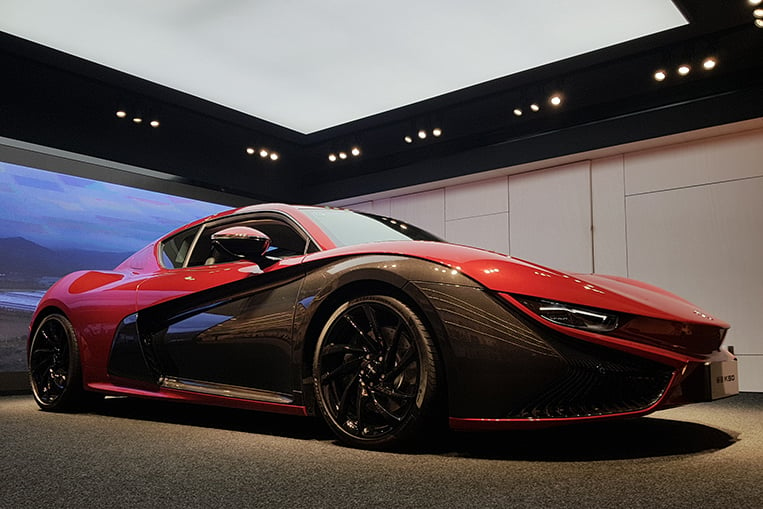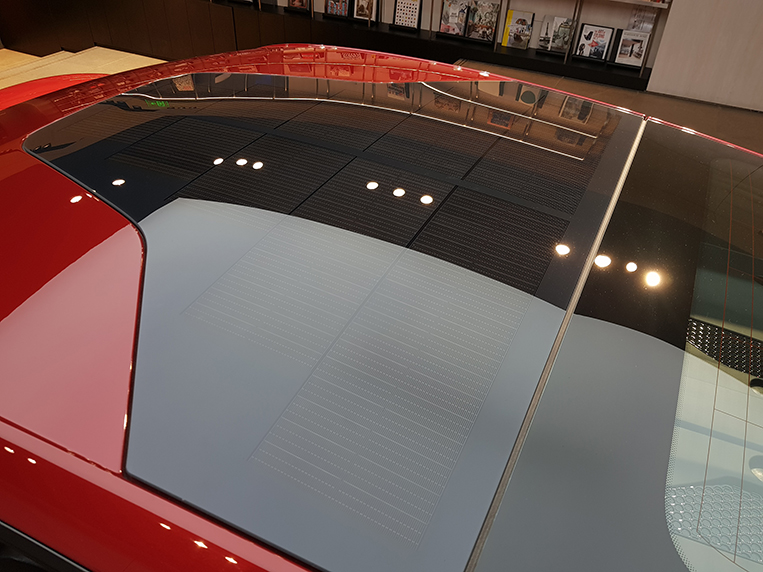
Chinese-made automobiles are fast becoming mainstream across the globe, but is the world ready for a four-wheel-drive, all-electric supercar from the People’s Republic? Qiantu (pronounced shi-an-too), a new car manufacturer from Beijing, is willing to bet that it is. Enter the Qiantu K50.



If you’re into supercars, the K50 certainly looks the part. Its silhouette is that of a mid-engined two-seater, and though technically there is no traditional engine, the shape most definitely says speed. The narrow and slanted LED headlights, the daylight running lamps and the massive bumper-mounted intakes give the car a mean look, while the rear resembles the back of a spaceship. The doors and the front fenders are dominated by huge amounts of exposed carbon fiber, making sure everyone car see the extensive use of this material. Qiantu made sure that the K50 would be a head-turner, which bodes well for its supercar cred.



Styling is only half the story. The K50 is equipped with two electric motors—one for each axle, effectively giving it four-wheel drive. Each electric motor revs up to 12,000rpm and produces 140kW of power and 290Nm of torque. That means a combined 280kW and 580Nm of pure electric muscle. An overboost function, however, kicks total power to 320kW and torque to 680Nm, allowing for a 0-100km/h acceleration in just 4.6 seconds. Where the car comes lacking is top speed. Since it has a single forward gear, the maximum velocity is limited to just 200km/h. Long-distance driving was also considered, and Qiantu saw to it that the K50 could keep going for over 380km on a singe charge. Range is also helped by the energy recovery system, which is activated automatically when you let off the gas.
To combat the weight of the lithium-ion batteries, the K50 has an all-aluminum structure and a carbon-fiber body
One of the drawbacks of electric cars is weight, specifically of the banks of lithium-ion batteries. To combat this, the K50 has an all-aluminum structure and a carbon-fiber body. This keeps weight down to 1,980kg. Still a lot, but impressive considering the range of the batteries needed to propel the car. To prevent the weight from affecting the handling too much, Qiantu mounted the batteries low and toward the middle so that the center of gravity would be as close to the floor as possible, while achieving near-50:50 weight distribution (47:53, to be exact).


Driving dynamics is enhanced further with lightweight forged 19-inch wheels, with Pirelli P Zero tires providing grip. Aluminum double-wishbone suspension keeps the car planted, while a bespoke Brembo brake system with electronic calipers gets the K50 stopped when needed. And with four-wheel drive, you get to maximize all the grip there is from all four wheels. Qiantu’s DVT torque vectoring system constantly adjusts the amount of power going through the front and rear wheels, while using the brakes to adjust torque from side to side.




The interior definitely leans toward futuristic luxury, with two large LCD screens in place of gauges, dials and buttons—a 15.6-inch touchscreen in the middle, and a smaller LCD supplanting the instrument cluster. While they befit an electric supercar, their placement is a little clunky. The three-spoke steering wheel is handsome, and aside from the usual audio and cruise controls, there is a big red boost button that gives you extra power when you need it. The Alcantara and leather sports seats are nice—supportive and comfortable.
The Qiantu K50 combines gorgeous design, tons of tech and some impressive real-world performance. The cost of all this? It’s 686,800 Chinese yuan (P4.98 million). Unfortunately, it’s only sold in China. But it is currently looking to get homologated for the United States. And who knows? It might not be long before a car-crazy businessman takes interest in this brand.











Comments